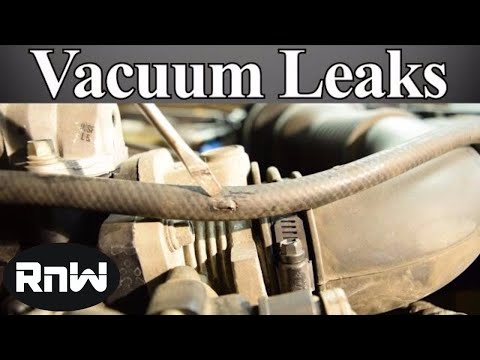
Your car idling rough while sitting at a set of red lights or when you first start it up can be a tense moment. You’re hoping against hope that the engine doesn’t stall, then the light turns green, or you set out, and the engine seems to smooth out as you step on the gas pedal miraculously.
While this might be a moment for a sign of relief, a car that starts rough and then smooths out when you give it more gas can be a sign of a more significant problem brewing under the hood.
If you’re lucky, the reason behind the issue of rough idle could be something as simple as a clogged air filter or a minor leakage in a vacuum hose, which could be affecting the fuel/air combination during start-up.
Though there are certainly some more serious problems that could be causing your car to start out rough, to rule out problems like fouled spark plugs or a clogged air filter, we’re going to have to pop the hood to understand what your car is really trying to tell you.
Is It Normal for Your Car to Run Rough When Cold?

Your car should start up and idle like normal in average cold weather. A cold engine block might need a slightly richer fuel/air ratio in deep, cold weather below zero degrees Fahrenheit. Until the block starts to warm up, it might run a little rough, especially if it’s been sitting without the block heater plugged in.
However, once the engine block starts to warm up and the thermostat opens, it should smooth out, and you shouldn’t have a rough idle. If it continues to idle rough even once the engine temp needle on the dash starts to move or stalls on you, then the cold-causing rough idle is likely a secondary symptom of a more serious problem.
5 Key Reasons Why Your Car Starts Rough and Then Smooths Out
A fuel system problem is the most common reason a car starts rough and smooths out. This is usually a clogged fuel filter, a failing fuel pump, or a problem with the fuel injectors. Spark plug problems, an ignition coil problem, a problem with the idle air control valve, a vacuum leak, or sensor problems could also affect the engine’s start-up performance.
1. A Fuel System Problem
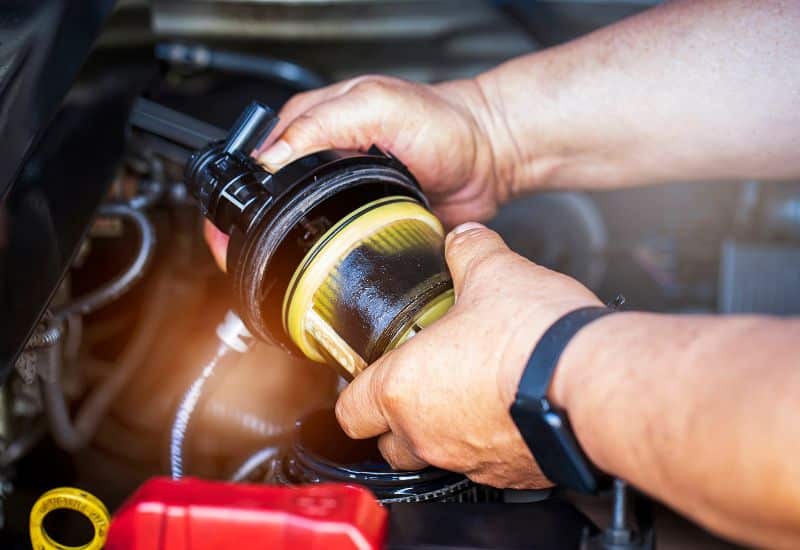
When the components of your car’s fuel system, like the fuel filter, fuel pump, and fuel injectors, don’t work together or they’re clogged by fuel debris, the imbalance in the fuel/air mixture can make it hard to start the engine, causing a rough start. The air becomes less dense once the engine warms up, and the roughness can smooth out.
This rough start can be frustrating and cause the engine to jerk or feel down on power when you try to accelerate from a stop.
2. Check for Bad Sensors
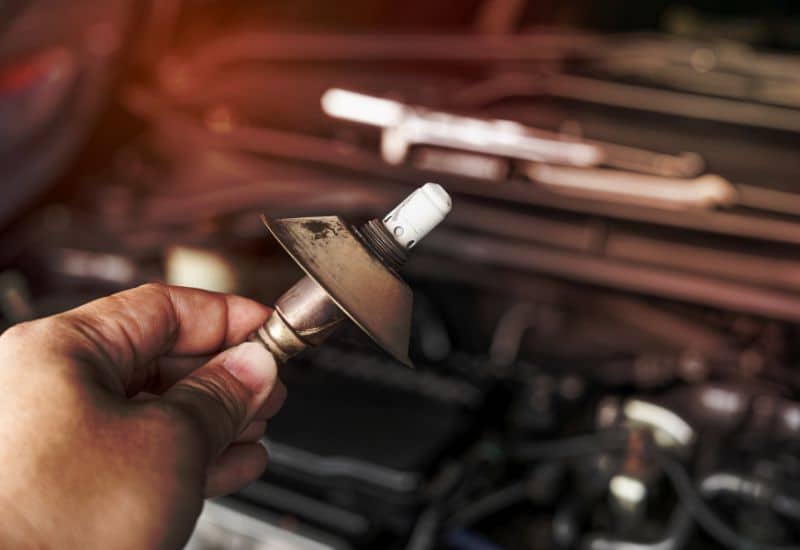
Sometimes, it’s not just a clogged fuel system that causes your engine to start rough. Bad sensors can also throw a wrench in the works, causing your car to sputter and jerk before finally smoothing out.
The primary culprits in this case are the Oxygen (O2), Engine Coolant Temperature Sensor (ECTS), and Mass Air Flow (MAF) sensors. A problem with any one of these, as well as with the Throttle Position Sensor (TPS) or Manifold Absolute Pressure (MAP) sensor, can make it difficult for the ECU to optimize the internal combustion process.
So, if you’re experiencing a rough start followed by a smoother ride once you hit the gas, it’s worth checking out these sensors to see if they need to be repaired or replaced.
3. An Air System Problem
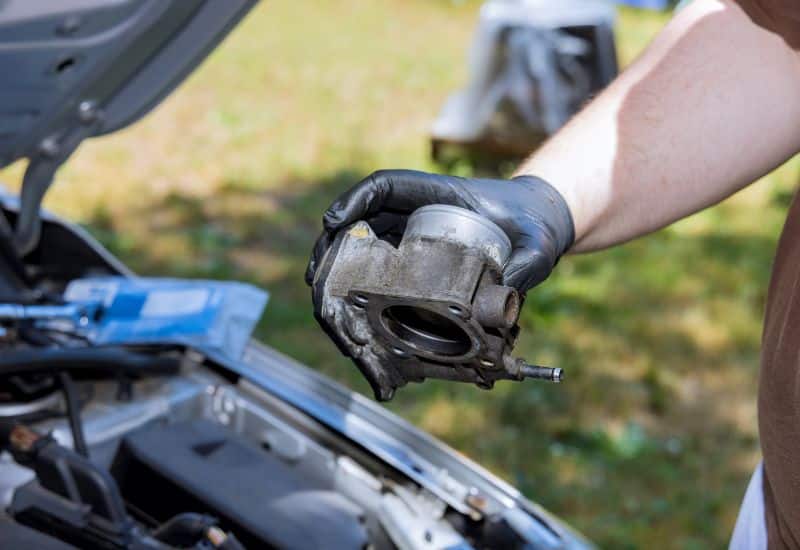
Problems in the idle Air control valve or the throttle body can make it hard for the ECU to get the air ratio correct, which can make your car start and idle rough. When you give it more gas, the ECU adjusts the fuel/air ratio again, which helps engine performance to smooth out.
4. A Spark Plug & Ignition Coil Problem
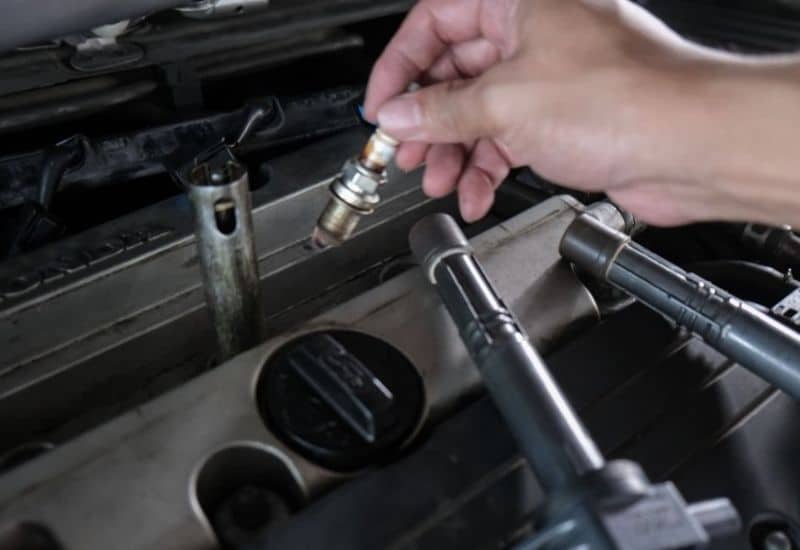
If a spark plug or ignition coil fails to fire in time with the engine, it can cause a noticeable problem, especially at start-up and when idling. Unburned fuel in the cylinders can lead to minor misfires, which you might mistake as a rough idle.
Spark plugs play a critical role in igniting the fuel in the engine’s cylinders. If they become worn or fouled with deposits, they can cause a weak or no spark, leading to a rough start.
However, once the engine starts running and warms up, the spark plugs can start firing more efficiently, causing the roughness to smooth out. This is because the engine’s heat helps burn off any excess fuel and deposits on the spark plugs.
Though you have an equal chance of this being a bad spark plug or an engine coil, they both tend to go bad around the same time and cause the same rough idle and misfire problems. To know for sure which it is, you’ll have to pull the spark plug to test it while also hooking the ignition coil up to a multimeter.
Don’t be surprised if it ends up being both. It’s very common for a bad ignition coil to affect spark performance so badly that the spark plug becomes fouled. So, it’s just good practice to plan on replacing the spark plug anytime you have to replace an ignition coil.
5. A Vacuum Leak can cause the issue
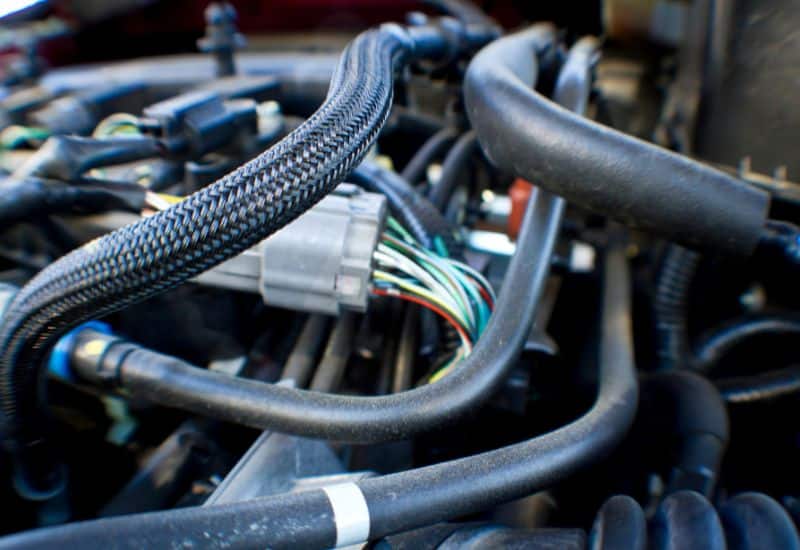
A vacuum hose leak hinders the engine’s ability to maintain proper pressure and optimize the fuel, air, and spark mixture, resulting in rough idle and difficult start-ups. The imbalance created by a vacuum leak can lead to a rough start, but as the engine warms up and starts running, the leak’s impact may diminish, smoothing out the roughness. However, As the hose continues to degrade, you’ll notice engine performance getting worse, and it could even cause dramatic misfires.
What Sensors Can Cause Rough Idle?
Several sensor problems can cause a rough idle. Though the most likely culprits are:
How to Determine If It’s a Sensor Problem
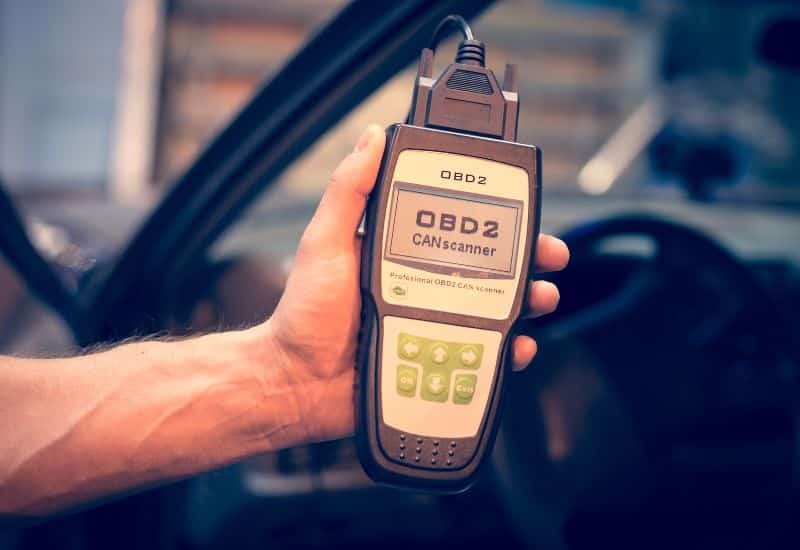
Hooking your car’s computer up to an OBD II code reader is an easy way to get a better idea of whether the rough start problem is due to a sensor problem or some other type of component failure. The most common sensor code problems are:
What Causes a Car to Idle Rough When in Gear but It Smooths Out if in Neutral or Park?

The ECU often sets up the engine to run a little leaner when it’s not in gear, which can reveal problems with a MAP sensor or a fuel pressure issue.
If the rough idle has you feeling like the engine might stall, it occasionally misses or backfires; it could be a sign of a problem with the manifold absolute pressure (MAP) sensor. Its main job is to read the intake manifold pressure and relay it to the ECU.
If the MAP sensor fails or gives off an intermittent signal, the ECU will struggle to get the fuel/air mixture just right. When you put the car in park or neutral, the ECU doesn’t have the engine run as lean, which can hide the symptoms of a failing MAP sensor.
Fuel pressure problems caused by a clogged fuel filter or a failing fuel pump might also show up as a rough idle when the car is in gear, which smooths out when you put it in the park. If you haven’t replaced your fuel filter in 30,000+ miles and/or hear a buzzing noise from the fuel tank, you should be suspicious that your rough idle when in gear is linked to a fuel pressure issue.
How to Diagnose the Cause of the Rough Start
Accurately diagnosing the underlying cause of why your vehicle starts out rough or idles hard but then smooths out starts with some simple common sense moves. Think about your routine maintenance on the car.
If it’s been more than 30,000 miles since you changed the fuel filter, that’s a good place to start. If it’s been more than 75,000 miles, then there’s a decent chance your spark plugs are causing the issue.
Then, look around the engine bay for signs of vacuum hose leaks or other air problems. Spraying a little water out of an old glass cleaner spray bottle near hose connections might help. If you see the mist of water get sucked in, you’ll have found your vacuum hose leak.
The next smart move to diagnose the hard start is to connect the ECU to an OBD II code reader. Sometimes, the ECU will throw codes even if the check engine light hasn’t come on. Even if you don’t own a code reader, you can usually go to an auto parts store, and they’ll check the codes for you for free.
If it gives you one of the sensor codes we mentioned earlier, then you’re already a step ahead of the game. However, there could also be component failures like spark plug problems, ignition coil issues, and idle air control valves that could be causing your car to start rough yet smooth out when you drive it.
Common Diagnostic Codes to Help Uncover Why Your Car Starts Out Rough
A bunch of other codes might clue you into what’s causing the hard starting problem if the issue is related to a component. Some of the more common codes that might help you dial in where the problem lies are:
Expert Advice on How to Fix Your Car’s Rough Start-Up Problem
After doing your due diligence on diagnosing why your car is starting out rough or idling hard before smoothing out, you can consider your repair options. Some things, like cleaning the idle air control valve or replacing the fuel filter, might be easily within range of what a DIY mechanic can do. More major repairs like replacing fuel injectors or a bad fuel pump might be better left to a professional.
1. Fixing Fuel System Problems
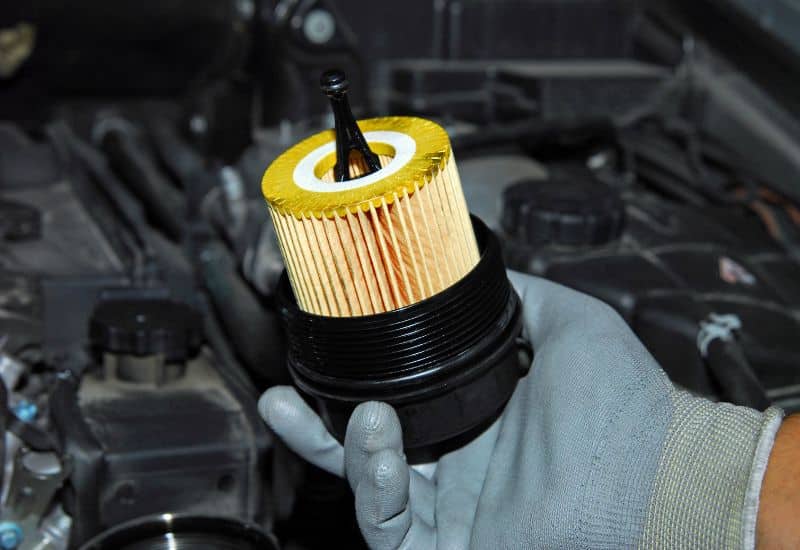
Replacing a clogged fuel filter is something you can do on your own for just the cost of the part and an hour lying on your garage floor. However, you can also get it done just about anywhere that does oil changes for $50 and $175.
Replacing a fuel pump will run you between $250 to $1,000, depending on the make, model, and the fuel pump location. This is something that is better left to a professional mechanic, as most are integrated into the fuel tank.
Replacing bad fuel injectors can run you from $350 to $900, depending on the number of cylinders your engine has and the mechanic’s hourly rate.
However, if your car is starting out rough and smooths out without severe stalling and other performance issues, you might be able to clean your own fuel injectors, which is cheap and relatively easy for the average DIY mechanic.
2. Replacing Bad Sensors
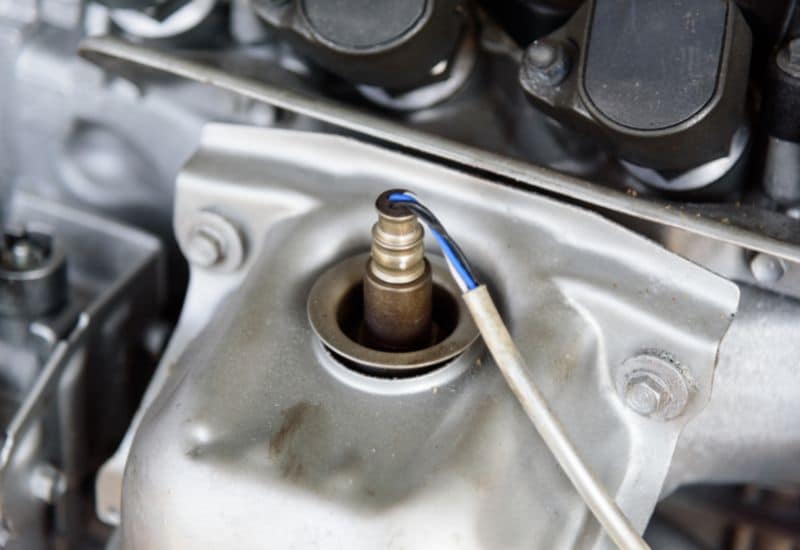
Let’s say you slapped a code reader on the car’s ECU, and it threw a code indicating a bad O2, ECTS, or MAF sensor. These are standard sensors that can cause a rough start or idle, which might just be within range of what you can replace on your own.
Though if you feel it’s out of your depth, there’s certainly no shame in having a professional mechanic replace them.
3. Fixing an Air System Problem
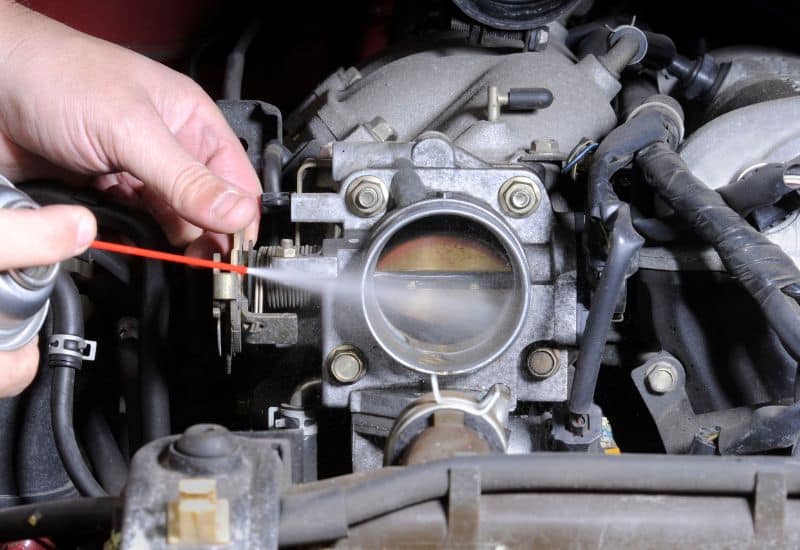
A simple cleaning can sometimes clear up problems with the idle air control valve and the throttle body. You can probably do this on your own with some simple tools and modest mechanical skills. However, if the problem is severe, the check engine light is on, or the rough idle doesn’t smooth out, causing the engine to stall, you might have to have the idle air control valve completely replaced.
The cost to have a mechanic completely replace a bad idle control air valve can range from $120 to as much as $550.
The cost to replace a badly clogged or damaged throttle body ranges from $175 to $300, with about $75 to $150 being the cost for just the part itself.
4. Fixing a Spark Plug or Ignition Coil Problem
Once you’ve tested the spark plugs with a spark tester and diagnosed the ignition coils with a multimeter to confirm they’re the reason why your car starts rough but smooths out as you drive, you can decide on your repair options.
I. Replacing Bad Spark Plugs
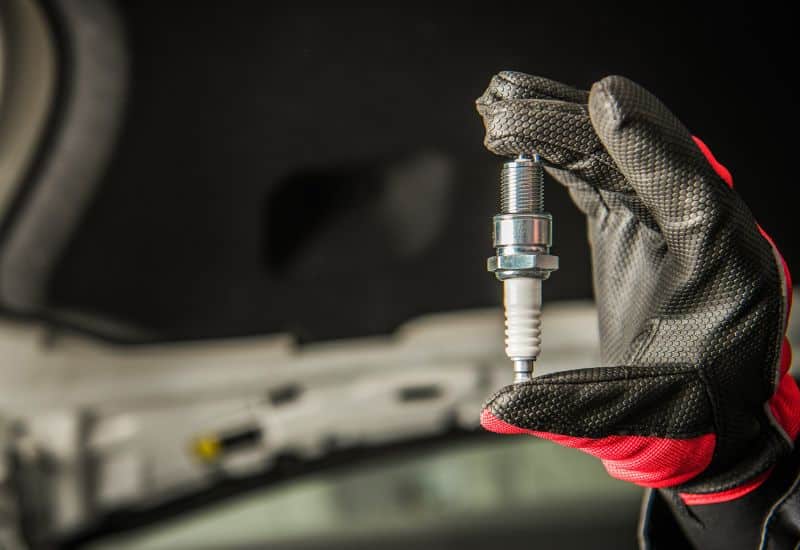
It only takes a modest amount of technical skill and a torque wrench to replace your own spark plugs. However if you’re over 75,000 miles, the smart money is to have a mechanic replace all your spark plugs as part of a comprehensive tune-up.
The cost to replace spark plugs yourself is usually $20 to $25 per plug, not counting essential tools like a torque wrench.
The cost to have a mechanic replace your spark plugs adds an extra $125 to $250 in labor costs.
A full tune-up by a mechanic ranges from $250 to $750.
II. Replacing Bad Ignition Coils
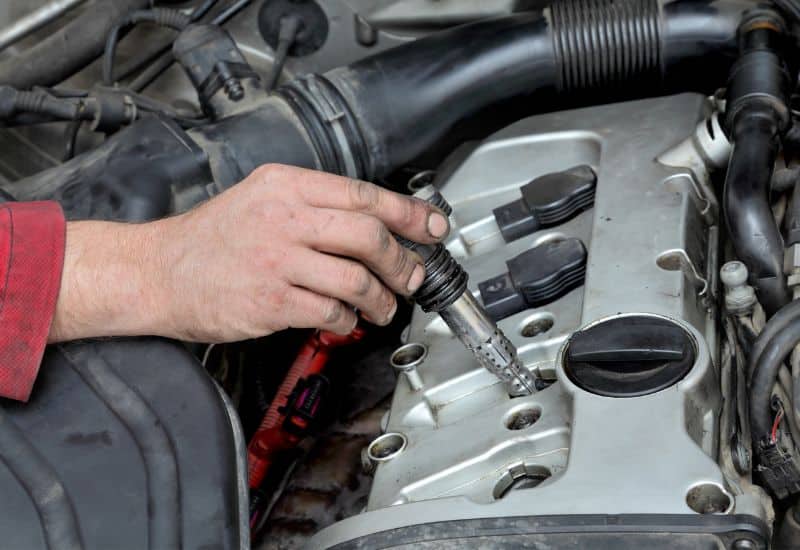
An ignition coil can start failing and even occasionally misfiring in a way that feels like a rough idle. The coil usually needs to be replaced along with the spark plug. You can confirm this by testing it with a multimeter.
A highly competent DIY mechanic can usually replace their own ignition coils, but if you need to replace more than one, it can eat up the better part of a Saturday afternoon.
When you have one ignition coil causing the car to start out rough, another is about to fail in a week or two. If your car is nearing its next tune-up and you tested at least one or two bad ignition coils or a problem with the coil pack itself, it’s usually best to have a mechanic replace them all, along with the spark plugs.
The part cost for a single ignition coil runs around $50 to $85 to replace it yourself.
The cost of a mechanic replacing a single ignition coil ranges from $120 to $175.
The cost to have all your ignition coils replaced simultaneously, with all new spark plugs, can run from $450 to $900, depending on the number of cylinders and the engine layout.
5. How to Fix a Vacuum Hose Leak
If you find one when you’re on the road and you’re worried that your engine is running so badly that it might leave you stranded, a few strips of good old-fashioned duct tape or electrical tape might serve as a quick fix. Though this is just enough to get you home safely.
Eventually, you’ll need to completely replace the vacuum hose, which is something an average DIY mechanic can do on their own. However, a mechanic can also do it for you cheaply. They can also spot if any other hoses are about to fail.
The cost for a new vacuum hose will run you around $25 to $60.
Having a mechanic replace a bad vacuum hose and find any other hoses that are about to fail will run around $90 to $150.
Frequently Asked Questions
Can a Blown Head Gasket Cause a Rough Start?
A blown head gasket or a cracked head will generally affect engine performance, which can cause a bad start and a hard idle. However, these are usually major faults that allow oil and coolant to mix and affect internal combustion. Usually, the exhaust is white and causes the engine to run hot or even overheat.
It might be possible for a minor failure in the head gasket to affect engine performance at start-up and cause it to idle roughly. Then, when you accelerate, the engine smooths out as you give it gas. Though this scenario will still cause the engine to run hot, and you’ll likely notice rapid changes in engine performance that you can’t ignore.
Is It OK to Ride the Gas and brake?
If your car is starting and/or idling rough, you might be tempted to step on the brake and lightly feather the gas pedal to get it to smooth out by giving it gas. Though this maneuver is risky, the drive train’s power can overwhelm the brakes. So, you should only attempt to do it in a modern car if you are desperately afraid the engine will stall at the lights, and you need to get to a mechanic.
Rough Starts, No More
If you catch it early, many reasons a car starts out rough but smooths out when driving are easily fixable. If you’ve been a little lax with routine maintenance, it might just be that the fuel filter needs to be replaced and/or maybe the fuel injectors need a little cleaning.
Sometimes, a rough starting car without any major engine performance issues can be chalked up to a bad sensor. A problem with an upstream O2 sensor, a MAP, MAF, or ECTS can confuse the ECU, which causes the engine to start rough but smooth out when you give it gas. Replacing any of these sensors can usually cost $200 or less.
Sometimes, a car that starts rough and smooths out once you step on the gas pedal is an early sign of a more serious problem. Especially if the rough idle turns into a stall at the lights. This could be a problem with a fuel pump, spark plugs, or bad ignition coils. These are more major repairs that can cost you well over $500 or more.

Written By
Jason Farrell
Jason Farrell is a certified master technician, the editor of Mechanic’s Diary in Pittsburgh, Pennsylvania. He is ASE (Automotive Service Excellence) certified and earned a Bachelor’s Degree in Automotive Technology from Pittsburg State University. With nearly 18 prior years of experience in the automotive field, he has extensive knowledge about Domestic, European, and other foreign makes and models of cars and light trucks. Jason’s experience working as a technician and service manager at dealerships, gave him the experience and know-how of most aspects of inspection, diagnosis, and repair from engine and drivability to electrical, HVAC, brakes, steering and suspension and everything in between.

